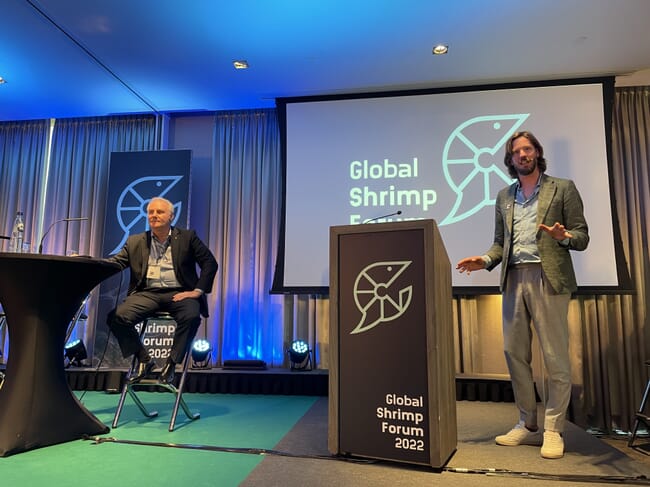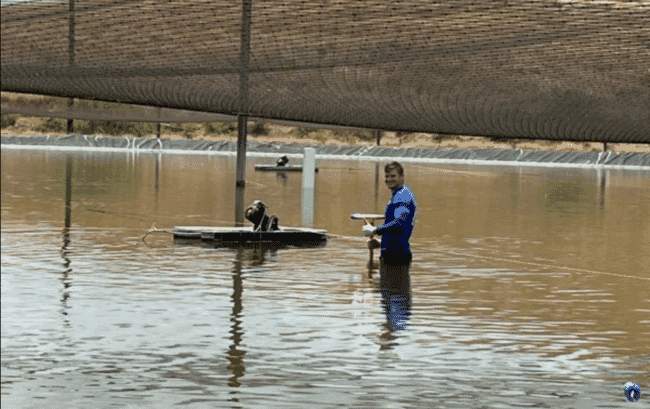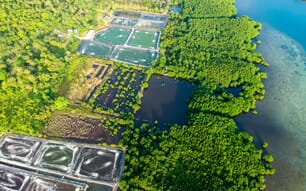
As well as being board member and managing director of the Global Shrimp Forum, which is taking place in Utrecht on 3-5 September, Willem van der Pijl acts as a strategic advisor to the Global Shrimp Council, which is currently made up of over 40 of the world’s largest shrimp producers and importers and will be next meeting at the Utrecht event.
Global Shrimp Forum has been supporting Global Shrimp Council to establish itself, which is logical according to van der Pijl.
“They’re trying to bring together the world’s biggest shrimp producers to co-invest in a global marketing campaign and we bring together the industry to accelerate initiatives that contribute to a more resilient future for shrimp,” he explains.
“The industry is really prioritising how to drive consumption and our co-operation with the Global Shrimp Council is about prioritising consumption. Getting the industry to work together to rapidly scale up investment into promoting shrimp as a healthy, sustainable, responsible protein is the highest priority of almost everyone in the industry,” he adds.
According to van der Pijl, the council is nearly ready to kick off its activities in earnest – adding members and building up financial muscle so it can help to drive demand.
“We are looking to expand the member base and are very optimistic that within a couple of months enough money will have been raised to launch a proper shrimp marketing campaign in the US, before moving on to other geographies at a later stage,” he explains.
Forum highlights
Fittingly, in one of the four plenary sessions at this year’s Global Shrimp Forum, Gabriel Luna and David Castro, co-founders and co-chairs of the council, will provide an update on the initiative's progress – following their member meeting the previous day, which will also provide another opportunity for new members to join.
Another session on van der Pijl’s highlights list focuses on how to grow India’s domestic shrimp market. This will include a presentation on the Indian protein market by Shan Kadavil, CEO of Fresh to Home, who will offer insights into India's animal protein landscape and the potential size of its domestic shrimp market. He’ll be joined by Manoj Sharma, who’s not only one of the country’s largest shrimp producers but also recently established his own shrimp restaurant chain, Zhingalala – an experience that will be a key part of his talk.
This session will be rounded off by the CEO of Fisher Farms, the largest shrimp producer in the Philippines.
“The Philippines has developed a very strong domestic market for shrimp and she will explain how this has been achieved and what Indian stakeholders can learn from it,” notes van der Pijl.
“If we can get India to eat more of its own production that would be a relief for the global shrimp market. But we want to do a reality check and establish how big the protein market is in India and how much of a stake shrimp can realistically gain in that market,” he adds.
Meanwhile a session on Day 2 will focus on demand in China.
“A panel of Chinese processing and importing companies will offer a deeper understanding of the market situation and the structure and dynamics of trade in China,” notes van der Pijl.

Reducing production costs
As well as driving demand, the shrimp sector is also desperate to reduce its overheads and stabilise its production. As a result, ways of addressing these challenges will also be presented in several sessions in the forum.
“Unfortunately prices have not really improved since last year, they remain stable, but at a level that’s not sustainable for many people in the industry. If the new price level becomes the new normal then companies across the supply chain will need to work on making their processes more efficient to reduce costs. Innovation is needed, affordable efficient feed is needed,” explains van der Pijl.
“So, for the shrimp x tech session, we’ve invited the CEOs of Kontali, GalaxEye and Minnowtech* – three companies on very different levels of abstraction that are trying to monitor and predict production outcomes better,” he adds.
Of these he says he’s particularly excited by GalaxEye. While other satellite-based monitoring startups have failed, van der Pijl believes that they are well-placed to succeed, not least because most of their income derives from their work with India’s defence sector, which means that they should have longer to develop and fine-tune their technology for shrimp than their former competitors.

The startup will be discussing their technology at the forum © Minnowtech
Regional differences
The last two Global Shrimp Fora have attracted delegates from around the world. Each year representatives of some countries tend to be more buoyant than others. However, this year, players across the board are struggling.
“Some people might be still be making some money, but the vast majority are not making much money, or not making any money at all. But the bigger the company the better you can handle a longer period of price compression,” van der Pijl points out.
“India and Ecuador might be maintaining their production volumes, but it doesn’t mean they’re doing well. However, at least in the short and mid term it’s probably cheaper to keep their farms running and to break even than to stop farming – if they stop they have to let go of their labour and still maintain their ponds. The question is how long can they keep them running,” he adds.
While Ecuador is currently the most competitive nation in terms of production costs, so dominates exports of the least processed products, India has the edge when it comes to processing and adding value, according to van der Pijl.
“Global supply is consolidating into Ecuador and India. Ecuador is taking the less processed markets and India is taking the more processed markets,” he explains.
This duopoly might pose a threat for players other countries, including those which dominated global markets until fairly recently.
“My main worry is what does that mean for countries like Vietnam and Indonesia, which are less competitive on both the farming and processing levels? In terms of long-term macro trends I think this is really concerning,” reflects van der Pijl.
“Both Indonesia and Vietnam have young innovative farmers who are investing in high intensity farms with round tanks and new production models. It’s beautiful and sustainable but will it be competitive against the very aggressive price setting of India and Ecuador?” he concludes.
*Minnowtech is part of Hatch Blue's investment portfolio, but The Fish Site retains editorial independence.






